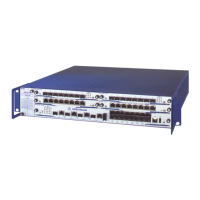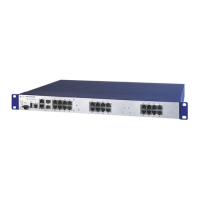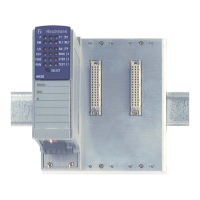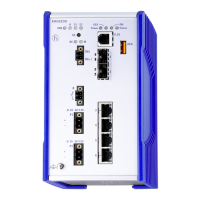QoS/Priority
RM Web L3E
Release
6.0
07/2010
5.5
Queue Management
131
5.5.1 Strict Priority
With the Strict Priority setting, the device first transmits all data packets that
have a higher traffic class before transmitting a data packet with the next
highest traffic class. The device transmits a data packet with the lowest traffic
class only when there are no other data packets remaining in the queue. In
some cases, a high level of data traffic can prevent packets with lower traffic
classes from being sent.
In applications that are time- or latency-critical, such as VoIP or video, this
method ensures that high-priority data is sent immediately.(see on page 132
“Maximum bandwidth“).
In the “Strict Priority” column you enable the function for the desired traffic
class.
5.5.2 Weighted Fair Queuing
With Weighted Fair Queuing, also known as Weighted Round Robin (WRR),
the user can assign a minimum or reserved bandwidth to each traffic class.
The result of this is that when the network is very busy, even data packets
with a low priority are transmitted.
If you assign Weighted Fair Queuing to all traffic classes, the entire
bandwidth for the corresponding port is available to you.
The weighting values range from 0% to 100% of the available bandwidth, in
steps of 5%.
X A weighting of 0 is equivalent to a "no bandwidth" setting.
X The sum of the individual bandwidths may add up to 100%.
In the "Strict Priority" column, you enable the function for the desired
traffic class. To do so, you disable "Strict Priority".
In the "Minimum Bandwidth" column, you enter a value for the desired
traffic class.

